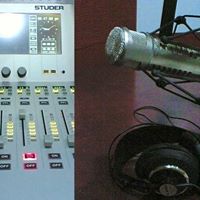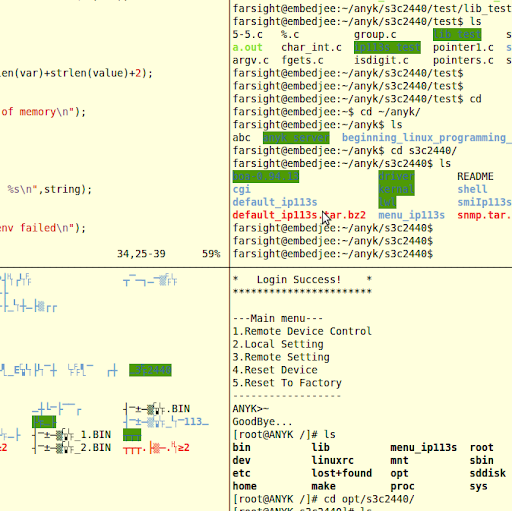Jian Wen Cao
age ~55
from Chicago, IL
- Also known as:
-
- Jian W Cao
- Jian Xu
- Phone and address:
-
3035 Quinn St, Chicago, IL 60608
(312)5679496
Jian Cao Phones & Addresses
- 3035 Quinn St, Chicago, IL 60608 • (312)5679496
- 3247 Aberdeen St, Chicago, IL 60608 • (773)8473160
- 355 26Th St, Chicago, IL 60616 • (312)2250282
Education
-
School / High School:St. Marys University School of Law
Ranks
-
Licence:New York - Currently registered
-
Date:2004
Isbn (Books And Publications)

Proceedings of the ASME Manufacturing Engineering Division--2001: Presented at the 2001 ASME International Mechanical Engineering Congress and Exposition November 11-16, 2001, New York, New York
view sourceAuthor
Jian Cao
ISBN #
0791835499

Lawyers & Attorneys

Jian Cao - Lawyer
view sourceAddress:
Kunlun Law Firm
(866)4096455 (Office)
(866)4096455 (Office)
Licenses:
New York - Currently registered 2004
Education:
St. Marys University School of Law
Resumes

Board Member
view sourceLocation:
2010 Orrington Ave, Evanston, IL 60201
Industry:
Mechanical Or Industrial Engineering
Work:
Mhub Chicago
Board Member
Northwestern University
Director, Northwestern Initiative For Manufacturing Science and Innovation
Northwestern University
Associate Vice President For Research
Northwestern University
Cardiss Collins Professor of Mechanical Engineering
Board Member
Northwestern University
Director, Northwestern Initiative For Manufacturing Science and Innovation
Northwestern University
Associate Vice President For Research
Northwestern University
Cardiss Collins Professor of Mechanical Engineering
Education:
Massachusetts Institute of Technology 1990 - 1995

Jian Qiu Cao
view sourceLicense Records
Jian Cao
License #:
25841 - Active
Issued Date:
Aug 31, 2007
Renew Date:
Dec 1, 2015
Expiration Date:
Nov 30, 2017
Type:
Certified Public Accountant
Us Patents
-
Real-Time Draw-In Sensors And Methods Of Fabrication
view source -
US Patent:6769280, Aug 3, 2004
-
Filed:May 7, 2002
-
Appl. No.:10/140916
-
Inventors:Jian Cao - Wilmette IL
Junghoon Lee - Wilmette IL
Michael Peshkin - Evanston IL -
Assignee:Northwestern University - Evanston IL
-
International Classification:B21D 2222
-
US Classification:72 173, 72347, 72350
-
Abstract:A method and system for providing real time measurements of draw-in for closed loop control of a metal forming process including an elongated sensor on one of the tools positioned in the proximity of the deformation zone and adjacent to an edge of a sheet metal blank being formed. The sensor includes coils disposed in a signal coupling relationship and during the forming process, a signal applied to one of the coils induces a signal in the coil, producing a response signal that varies linearly as a function of the amount of overlap between the sensor and the sheet metal blank as the sheet metal blank is drawn into the deformation zone. A feedback signal produced from the response signal is used to control a parameter of the forming process as a function of retreat of the edge of the sheet metal blank into the deformation zone.
-
Microforming Method And Apparatus
view source -
US Patent:8408039, Apr 2, 2013
-
Filed:Oct 6, 2009
-
Appl. No.:12/587408
-
Inventors:Jian Cao - Wilmette IL, US
Anthony Swanson - Chicago IL, US
Tiffany Davis - Chicago IL, US -
Assignee:Northwestern University - Evanston IL
-
International Classification:B21J 11/00
B21D 5/06
B21B 27/06 -
US Classification:72418, 72446, 72455, 723792, 72404, 72414, 72462
-
Abstract:Method of forming depressions (e. g. dimples) in a sheet material to form a textured surface thereon involves pressing one or more tool tips into a metallic or non-metallic sheet material while the sheet material is supported by a support layer that is relatively softer (e. g. having a lower Young's modulus) than the sheet material so as to allow plastic deformation and reduce pile-up of raised displaced material of the sheet material at the edges of the depressions.
-
Hybrid Energy Storage System
view source -
US Patent:20110084648, Apr 14, 2011
-
Filed:Oct 9, 2009
-
Appl. No.:12/576803
-
Inventors:Jian Cao - Chicago IL, US
Ali Emadi - Chicago IL, US -
International Classification:H02J 7/00
-
US Classification:320103, 320167, 307 91
-
Abstract:A hybrid energy storage system for supplying power to an application with a fluctuating load profile, such as, for example, electric vehicles, hybrid electric vehicles, plug-in hybrid electric vehicles, wind energy harvesting equipment and solar energy harvesting equipment. The hybrid energy storage system includes an ultra-capacitor electrically connected to a DC bus and a power source electrically connected to the DC bus via a controlled switch. The hybrid energy storage system further including a DC/DC converter connected between the power source and the ultra-capacitor, the DC/DC converter boosting a voltage of the power source to charge the ultra-capacitor. The DC/DC converter is preferably controlled to maintain a voltage of the ultra-capacitor at a higher value than the voltage of the power source.
-
Deformation-Based Micro Surface Texturing System
view source -
US Patent:20120164384, Jun 28, 2012
-
Filed:Dec 15, 2011
-
Appl. No.:13/374210
-
Inventors:Jian Cao - Wilmette IL, US
Rui Zhou - Evanston IL, US
Kornel F. Ehmann - Evanston IL, US -
International Classification:B32B 3/00
B29C 59/02 -
US Classification:428141, 425385, 264293
-
Abstract:A compact deformation-based micro-texturing apparatus and method employ flexure bearing houses for rotatably supporting opposite ends of each of a first (e.g. upper) roll and a second (e.g. lower) roll to provide a working roll gap between the rolls, wherein at least one of the rolls has one or more micro surface features to plastically deform a surface of a workpiece deformed by rolling action in the roll gap. An electrical current may be passed through the workpiece to assist micro deformation. A roll gap adjusting device is operably associated with the first and second flexure bearing houses for adjusting the roll gap dimension to the final depth of the micro surface features to be imparted to the surface of the workpiece by the rolling action.
-
Adaptive Method And Apparatus For Forming Tailor Welded Blanks
view source -
US Patent:59411104, Aug 24, 1999
-
Filed:May 12, 1997
-
Appl. No.:8/854480
-
Inventors:Jian Cao - Wilmette IL
Brad L. Kinsey - Clio MI -
Assignee:Northern University - Evanston IL
-
International Classification:B21B 3700
-
US Classification:72 214
-
Abstract:Method and apparatus for TWB forming with adaptive control of movable punch and/or die segments in a manner to maintain a holding force at the weld line by the punch and die segments during at least initial forming of the blank in a manner to control and limit movement of the weld line. A tailor welded metal blank having a weld line is positioned between a punch and a die with the weld line spanning a cavity defined between the punch and the die. One or more individual segments of the punch and of the die are moved in a manner to engage opposite side regions of the weld line to apply a holding force to the weld line. Relative movement of the punch and/or die segments is adaptively controlled during at least initial deformation of the blank by the punch in a manner to maintain the holding force applied to weld line at a selected holding force value to retain the weld line in a plane defined by the punch and die segments, thereby reducing weld line movement. After initial deformation of the blank by movement of the punch to a preset punch location, the punch and die segments can be retracted away from the weld line during subsequent deformation of the blank.
-
Self-Healing, Hydrobphobic Composites And Related Methods
view source -
US Patent:20210260848, Aug 26, 2021
-
Filed:May 23, 2019
-
Appl. No.:17/057805
-
Inventors:- Evanston IL, US
Nicolas Martinez Prieto - Evanston IL, US
Jian Cao - Wilmette IL, US
Kyoo-Chul Park - Wilmette IL, US
Christian John Machado - Evanston IL, US -
International Classification:B32B 5/02
B32B 15/20
B32B 15/14
B32B 38/08 -
Abstract:Self-healing, hydrophobic composites and related methods are provided. A method of repelling water may comprise forming a layer of a self-healing, hydrophobic composite comprising a porous network of entangled polymer fibers and a hydrophobic phase change material infused throughout the network, on a surface of a substrate to form a treated surface; and exposing the treated surface to water, wherein the treated surface exhibits a native water droplet contact angle which is greater than that of an untreated surface without the layer of the composite.
-
Incremental Rotary Rolling Mill And Method
view source -
US Patent:20200188974, Jun 18, 2020
-
Filed:Oct 6, 2017
-
Appl. No.:16/341163
-
Inventors:- Evanston IL, US
Kornel Ehmann - Evanston IL, US
Man Kwan Ng - Evanston IL, US
Jian Cao - Wilmette IL, US -
Assignee:Northwestern University - Evanston IL
-
International Classification:B21B 37/46
B21B 19/06
B21B 1/20
B21B 39/02
B21B 35/06 -
Abstract:A rolling mill system for Incremental rotary shaping of an elongated workpiece is provided that includes first and second workpiece holders. A support frame has a track with the first and second workpiece holders being movably associated with the track, the workpiece holders and an associated workpiece being movable in unison along the track. A radial chuck is mounted to the frame that includes a plurality of jaws that are movable radially inwardly and outwardly. Each jaw has a tool mounted thereto that is rotatable about an axis of rotation, with the axis of rotation of each tool being oriented at a skew angle relative to the longitudinal axis of a workpiece. A source of electric current and an electrically conductive flow path are provided for flowing electrical current through a workpiece. A controller is provided that is configured to control the operation of each of the first motor, second motor and third motor, and to control the flow of current flowing through the tools to the workpiece.
-
Systems And Methods For Global Thermal Control Of Additive Manufacturing
view source -
US Patent:20190184494, Jun 20, 2019
-
Filed:Dec 18, 2018
-
Appl. No.:16/223534
-
Inventors:- Evanston IL, US
Kornel Ehmann - Evanston IL, US
Jian Cao - Wilmette IL, US -
International Classification:B23K 26/342
B33Y 30/00
B33Y 50/02
B33Y 10/00
B23K 26/03
B23K 15/00
B23K 26/082
B23K 26/70
B23K 26/146
B23K 26/14 -
Abstract:A system for making a build using directed energy deposition is provided. The system includes a primary heat source; a processing nozzle movable relative to the build for delivering a metal powder, a carrier gas for the metal powder, and a shield gas to the build; a melt pool sensor for providing information regarding a temperature of a melt pool of the build; a secondary heat source separate from the primary heat source positionable relative to the build for delivering heat to a selected area of the build; a cooling source positionable relative to the build for delivering a cooling fluid to a selected area of the build; and a control system for operating the primary heat source, the secondary heat source and the cooling source to maintain a desired temperature profile for the build. The system preferably includes a temperature sensor for providing a temperature profile of the build. The temperature control system preferably includes a programmable controller configured to control the secondary heat source and the cooling source to conform the temperature of the build to the desired temperature profile. In one embodiment, the programmable controller is pre-programmed with a dynamic thermal model of a thermal history of the build for each time step.

Jian Cao
view source
Jian Cao
view source
(Jian Cao)
view source
Jian Cao
view source
Jian Cao
view source
Jian Cao
view source
Jian Cao
view source
Jian Cao
view sourceGoogleplus

Jian Cao
Work:
Unemploy.
Education:
Kwantlen Polytechnic University

Jian Cao
Education:
Jilin University - Software
About:
An software engineerTravel to the China's most Oriental part to see the sunrise by selflove the secret garden
Tagline:
Good to Great

Jian Cao

Jian Cao (Iissy)

Jian Cao

Jian Cao

Jian Cao

Jian Cao
Plaxo

Jian Cao
view sourceNorthwestern University
Myspace
Youtube
Get Report for Jian Wen Cao from Chicago, IL, age ~55







